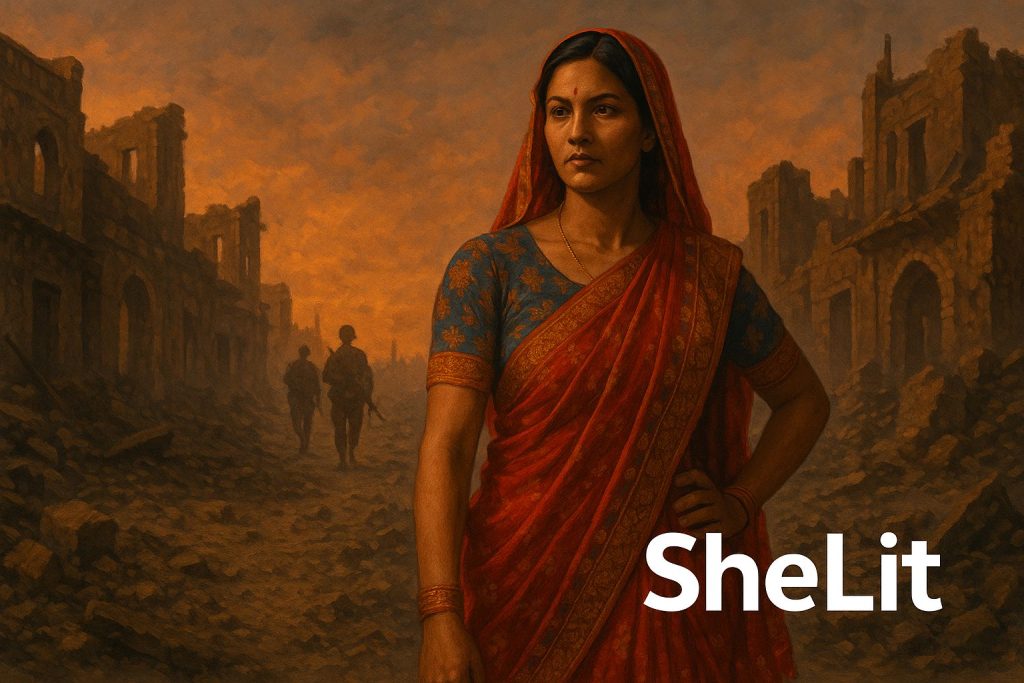War is often viewed through the lens of political strategy, national security, and economic impact. However, its gravest consequences are borne by civilians—particularly women. In India, the effects of war and armed conflict, whether cross-border hostilities or internal insurgencies, have had deeply gendered impacts. While men are often seen on the front lines, women face an invisible battleground of trauma, displacement, violence, and socio-economic disempowerment.
1. Displacement and Loss of Livelihood
One of the most immediate consequences of war or conflict is mass displacement. In India, regions affected by cross-border tensions (like Jammu & Kashmir), insurgency (such as in the North-East or central tribal belts), or communal riots often see thousands of people fleeing their homes. Women, in such cases, lose not only their homes but also their access to livelihood, education, and healthcare.
In displacement camps or conflict zones, women often face severe challenges in accessing menstrual hygiene products, prenatal and maternal healthcare, and safety from violence.
2. Sexual and Gender-Based Violence
History and global studies confirm that sexual violence is often used as a weapon of war. In India, there have been documented instances where women have been subjected to rape, molestation, and abuse during riots, communal conflicts, and insurgencies. The 2002 Gujarat riots and the 1990s insurgency in Kashmir serve as painful reminders of how women’s bodies are made battlegrounds during conflict.
Women not only suffer direct violence but also carry the burden of shame, societal stigma, and trauma for years, often without justice.
3. Psychological Trauma
War affects mental health profoundly, and women often experience compounded trauma. Witnessing death, enduring violence, and facing the loss of loved ones leave long-term psychological scars. Additionally, in a society like India’s where mental health support is scarce and stigmatized, women rarely receive the counseling and care they need.
Widows of soldiers, women who lose children in conflict, or those who survive gender-based violence often face isolation and depression.
4. Increased Care Burden and Social Responsibilities
When men go to war or die in conflict, women are left behind to care for families. In many Indian households, this sudden shift in responsibility leaves women juggling multiple roles—provider, caretaker, and protector—often without support. In rural and conservative communities, the death or absence of male members can lead to social ostracization or increased vulnerability.
Women from border regions like Kargil or disturbed areas in Manipur and Chhattisgarh have repeatedly taken on the dual burden of emotional survival and practical leadership in their homes.
5. Marginalization in Peace and Policy Processes
Despite being deeply affected by conflict, women in India are often excluded from formal peace negotiations, policy-making, and rehabilitation planning. Their voices remain unheard in the very processes that aim to rebuild societies. The lack of gender-sensitive conflict resolution leads to the continuation of patriarchal structures even after the guns have fallen silent.
6. Impact on Education and Generational Consequences
War disrupts education, especially for girls. In refugee camps or conflict-ridden areas, schools are destroyed or abandoned, and families often marry off daughters early to ensure “protection.” This deepens the cycle of poverty, illiteracy, and dependence, affecting not just one generation, but many to come.
The consequences of war on women in India are vast, profound, and often invisible. It is essential that India adopts a gender-sensitive approach to conflict resolution, ensures justice for survivors of violence, and empowers women as agents of peace and resilience. Their stories must not be sidelined; instead, they must be brought to the forefront of national discourse. Only then can we move toward a truly just and peaceful society.
SheLit Desk

